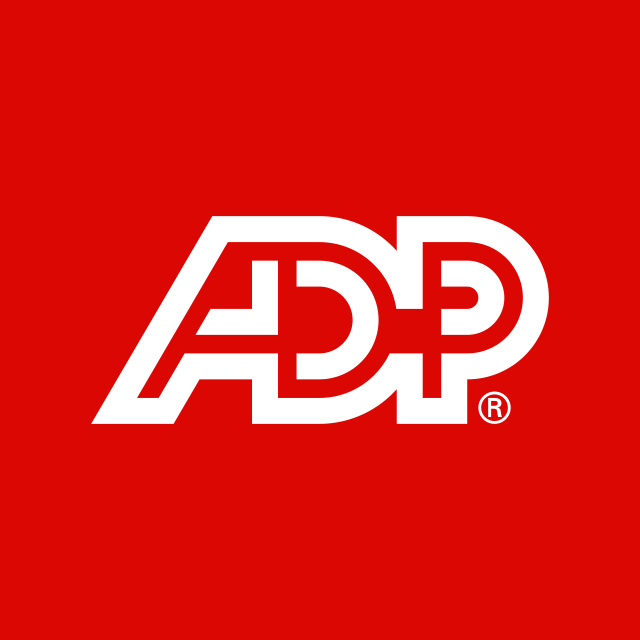Анализ компании Automatic Data Processing
1. Резюме
Плюсы
- Дивиденды (2.17%) больше среднего по сектору (0.6574%).
- Доходность акции за последний год (-0.0137%) выше чем средняя по сектору (-49.73%).
- Текущая эффективность компании (ROE=93.14%) выше чем в среднем по сектору (ROE=17.11%)
Минусы
- Цена (219 $) выше справедливой оценки (109.12 $)
- Текущий уровень задолженности 6.99% увеличился за 5 лет c 5.39%.
Похожие компании
2. Цена акции и эффективность
2.1. Цена акции
2.2. Новости
2.3. Рыночная эффективность
| Automatic Data Processing | Technology | Индекс | |
|---|---|---|---|
| 7 дней | -28.2% | -3.2% | 1.9% |
| 90 дней | -16.9% | -40.5% | 6.2% |
| 1 год | -0% | -49.7% | 33.7% |
ADP vs Сектор: Automatic Data Processing превзошел сектор "Technology" на 49.72% за последний год.
ADP vs Рынок: Automatic Data Processing значительно отстал от рынка на -33.71% за последний год.
Стабильная цена: ADP не является значительно более волатильным чем остальная часть рынка на "NASDAQ" за последние 3 месяца, типичные отклонения в пределах +/- 5% в неделю.
Длительный промежуток: ADP с недельной волатильностью в -0.000263% за прошедший год.
3. Резюме по отчету
4. Фундаменальный анализ
4.1. Цена акции и прогноз цены
Выше справедливой цены: Текущая цена (219 $) выше справедливой (109.12 $).
Цена выше справедливой: Текущая цена (219 $) выше справедливой на 50.2%.
4.2. P/E
P/E vs Сектор: Показатель P/E компании (27.38) ниже чем у сектора в целом (73.97).
P/E vs Рынок: Показатель P/E компании (27.38) ниже чем у рынка в целом (48.05).
4.2.1 P/E Похожие компании
4.3. P/BV
P/BV vs Сектор: Показатель P/BV компании (22.59) выше чем у сектора в целом (9).
P/BV vs Рынок: Показатель P/BV компании (22.59) выше чем у рынка в целом (3.1).
4.3.1 P/BV Похожие компании
4.4. P/S
P/S vs Сектор: Показатель P/S компании (5.35) ниже чем у сектора в целом (8.07).
P/S vs Рынок: Показатель P/S компании (5.35) ниже чем у рынка в целом (10.14).
4.4.1 P/S Похожие компании
4.5. EV/Ebitda
EV/Ebitda vs Сектор: Показатель EV/Ebitda компании (18.82) ниже чем у сектора в целом (82.83).
EV/Ebitda vs Рынок: Показатель EV/Ebitda компании (18.82) ниже чем у рынка в целом (19.1).
5. Доходность
5.1. Доходность и выручка
5.2. Доход на акцию - EPS
5.3. Прошлая доходность Net Income
Тренд доходности: Восходящий и за последние 5 лет вырос на 12.77%.
Замедление доходности: Доходность за последний год (9.96%) ниже средней доходности за 5 лет (12.77%).
Доходность vs Сектор: Доходность за последний год (9.96%) превышает доходность по сектору (3.41%).
5.4. ROE
ROE vs Сектор: Показатель ROE компании (93.14%) выже чем у сектора в целом (17.11%).
ROE vs Рынок: Показатель ROE компании (93.14%) выже чем у рынка в целом (10.87%).
5.5. ROA
ROA vs Сектор: Показатель ROA компании (7.12%) ниже чем у сектора в целом (9.17%).
ROA vs Рынок: Показатель ROA компании (7.12%) выже чем у рынка в целом (6.5%).
5.6. ROIC
ROIC vs Сектор: Показатель ROIC компании (54.13%) выже чем у сектора в целом (13.26%).
ROIC vs Рынок: Показатель ROIC компании (54.13%) выже чем у рынка в целом (10.79%).
7. Дивиденды
7.1. Дивидендная доходность vs Рынок
Высокая див доходность: Дивидендная доходность компании 2.17% выше средней по сектору '0.6574%.
7.2. Стабильность и увеличение выплат
Стабильность дивидендов: Дивидендная доходность компании 2.17% стабильно платится на протяжении последних 7 лет, DSI=0.93.
Слабый рост дивидендов: Дивидендный доход компании 2.17% слабо или не растет за последние 5 лет. Рост на протяжении только 0 лет.
7.3. Процент выплат
Покрытие дивидендами: Текущие выплаты из доходов (58.18%) находятся на комфортном уровне.
8. Инсайдерские сделки
8.1. Инсайдерская торговля
Продажи инсайдеров Больше покупок инсайдеров на 161.45% за последние 3 месяца.
8.2. Последние транзакции
| Дата сделки | Инсайдер | Тип | Цена | Объем | Количество |
|---|---|---|---|---|---|
| 17.09.2024 | DeSilva Joseph Corp VP |
Продажа | 280 | 387 240 | 1 383 |
| 17.09.2024 | DeSilva Joseph Corp VP |
Покупка | 169.84 | 234 889 | 1 383 |
| 17.09.2024 | Kwon David Corp VP |
Продажа | 280 | 28 000 | 100 |
| 09.09.2024 | Ayala John Corp. VP |
Продажа | 269.7 | 7 959 930 | 29 514 |
| 09.09.2024 | Ayala John Corp. VP |
Покупка | 166.08 | 3 179 930 | 19 147 |
Оплатите подписку
Больше функциональности и данных для анализа компаний и портфеля доступно по подписке







